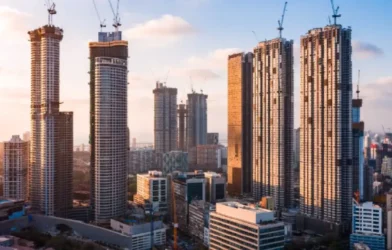Subtotal ₹0.00
In a bid to strengthen municipal finances and attract fresh capital for urban infrastructure, the government is exploring a dedicated insolvency framework for urban local bodies and municipal corporations. The proposed legislation, expected to follow after amendments to the Insolvency and Bankruptcy Code come into force, would offer lenders greater security and potentially reshape the financing landscape for India’s cities.
The move is intended to inspire confidence among lenders to these entities, which play a critical and rising role in city infrastructure creation, besides being responsible for provision of public services relating to water supply, sanitation etc.
“Currently, the creditors are sceptical of lending money to municipalities which is affecting their ability to undertake capital expenditure. A dedicated insolvency legislation will lower the risk for lenders who would be willing to lend to them at lower rates. For municipalities, this will also provide a wider pool of capital to source from,” an official said. “An insolvency mechanism designed for urban local bodies could jumpstart the investments to enhance the urban infrastructure,” the person added.
Since 2018, urban local bodies (ULBs) with relatively better credit profiles have been tapping the bond market, and the Securities and Exchange Board of India has been promoting municipal bonds as a key instrument to finance urban infrastructure and sustainable development.
According to the sources, the proposed insolvency legislation for ULBs might take cue from global examples like the Chapter 9 Rule in the US, to safeguard investors in municipal bonds during bankruptcy. Experts have pointed out that even the SEBI is yet to offer clear guidance on the aftermath of municipalities turning bankrupt and being unable to pay back their debts.
The government has been vocal about the need for ULBs to undertake massive capital expenditure. However, most of them continue to face fiscal stress, despite the efforts of the Finance Commissions to buttress their revenues, by way of direct transfers from the Centre. A proposal to allocate a portion of Goods and Service Tax (GST) proceeds directly to local bodies hasn’t materialised yet.
Experts said that limited sources of income and high expenditure on revenue items such as salaries have deteriorated the finances of most municipalities over the years. Also, with the GST subsuming many levies, local bodies had to let go of their tax revenue streams like octroi, local body tax and entry tax and advertisement tax.
“About 60% of the revenues of municipal corporations are spent on revenue expenditure, primarily administrative costs. Deteriorating revenue in conjunction with high administrative expenses leads to an adverse credit profile, making it difficult for the municipalities to borrow for capital expenditure, when permitted. A specialised law will give visibility to lenders to ascertain risks appropriately,” said Devendra Mehta, partner at PwC.














